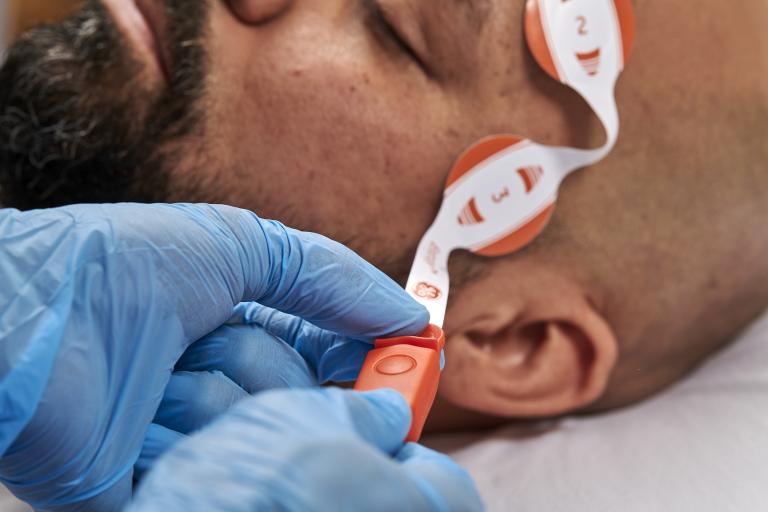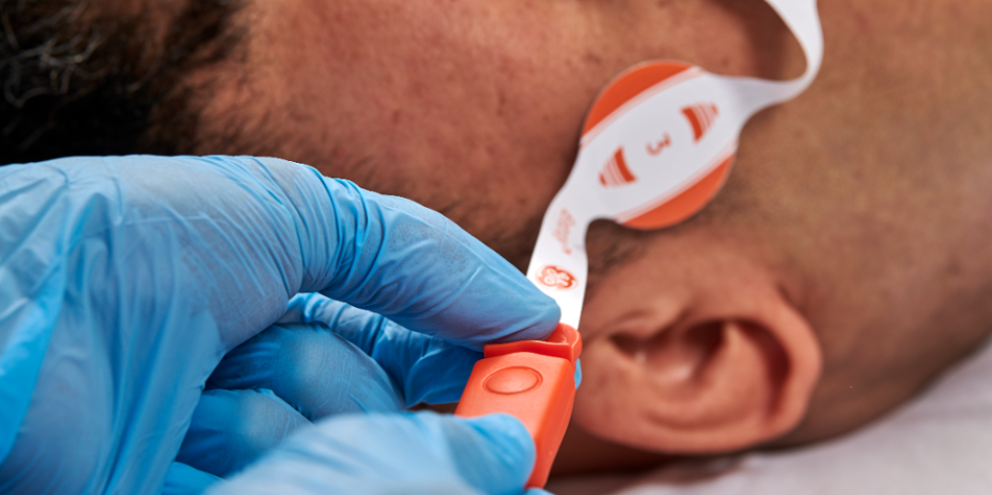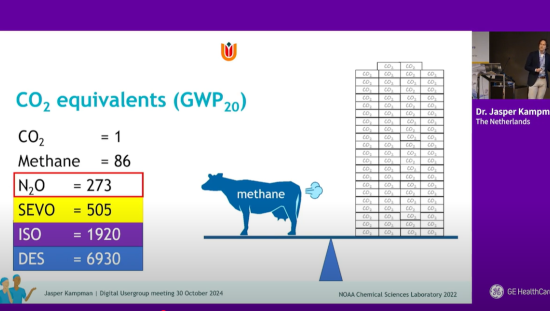
Entropy sensors can assist in locating this delicate balance by closely monitoring the effects of anesthetic agents on a patient's brain function. Too little anesthesia and a patient may regain consciousness during a surgical procedure and experience severe pain; too much anesthetic agent can prolong a patient's recovery time.
Although anesthesia is generally safe, getting the levels right the first time can reduce the need for repeated exposure, which can have lasting effects on the developing and aging brain1.
The Full Picture of Anesthesia Delivery and Measurement
Entropy itself is just one method for anesthesia measurement—and even within this modality, there are two ranges assessed via EntropyTM sensors simultaneously.
- Response Entropy (RE) is a fast-reacting parameter that detects the activation of frontal electromyography (FEMG) signals, or, the electrical activity of facial muscles during rest and contraction.
- State Entropy (SE) is a more stable parameter that can be used to assess the hypnotic effect of anesthetics. It is less affected by facial muscle activation because it is mostly based on electroencephalography (EEG) signals, or, brain activity itself.
Together, these parameters can reduce anesthetic use and help patients emerge from anesthesia faster. However, Entropy is just one part of the complex picture of anesthesia observation. This is why GE HealthCare pulled together three gold standard anesthesia monitoring tools into one Adequacy of Anesthesia (AoA) concept:
- Entropy displays SE and RE to give a picture of the depth of hypnosis as well as indicate when a patient is emerging from anesthesia.
- TruSignal™ SpO2 monitors a patient's Surgical Pleth Index (SPI), a measurement of the patient's hemodynamic response to analgesia. TruSignal SpO2 does not have 501(k) clearance and is not currently available in the United States.
- Neuromuscular transmission (NMT) provides quantitative measures of immobility using electromyography.
Paired with GE HealthCare's CARESCAPE ONE™ monitor, these modalities can provide anesthesiologists with a comprehensive view of a patient's response to anesthesia on one screen. And within these modalities, various resources and accessories are called upon to ensure proper functionality; Entropy in specific relies on its sensor.
The Importance of an Entropy Sensor
Entropy sensors acquire the necessary data from EEG and FEMG signals that then inform SE and RE measurements. When a patient is under general anesthesia, their EEG signals change from irregular to regular patterns as the anesthesia deepens; FEMG also becomes more regular as anesthetics begin to saturate the deeper parts of the brain. By monitoring these signals with an Entropy sensor, anesthesiologists can adjust anesthetics as needed to ensure the best possible patient outcomes.
Studies have shown reusable clinical accessories that touch a patient have a higher probability of cross-contamination than their disposable, single-patient use counterparts. GE HealthCare only offers Entropy sensors in a disposable, single-patient use format, available in boxes of 25, to reduce the risk of cross-contamination.
In the event that fewer procedures requiring anesthesia are performed, these sensors should have the ability to safely sit in storage for longer periods of time. The last Entropy sensor on the shelf should be as effective as the first. However, using an accessory that has exceeded its shelf life raises the chance of poor performance or exposure to infection. Increasing the length of time that a product can be stored while maintaining its efficacy and safety is, therefore, a worthwhile venture for any medical product manufacturer.
GE HealthCare recently expanded the shelf life of the following Entropy sensors:
- Entropy Sensor. Extended from 12 to 24 months.
- EasyFit Entropy Sensor. Extended from 12 to 16 months.
GE sensors are safe to use during defibrillation and electrosurgery and do not contain rubber latex, which means they are safe to use for patients who may have a latex allergy. The EasyFit sensor uses the same cable as the Entropy Sensor, expanding usability, and features an easy attach/detach design. Additionally, all GE Entropy sensors utilize low and stable impedance, providing a high-quality signal and clear RE and SE readings.
Taking Care to Take Care
Entropy monitoring is vital to anesthesia delivery and measurement, helping ensure that clinicians safely administer anesthetic agents to patients during surgery. However, care for this touchstone resource and its accessories shouldn't start at the beginning of an anesthesia event. To ensure effective and accurate measurements, healthcare facilities should aim to employ reliable, high-quality Entropy sensors with a long shelf-life and a wide range of compatibility with anesthesia monitoring equipment. Choosing the right product can cement a smooth, safe patient experience.
References
1. Wu L, Zhao H, Weng H, Ma D. Lasting effects of general anesthetics on the brain in the young and elderly: "mixed picture" of neurotoxicity, neuroprotection and cognitive impairment. J Anesth. 2019;33(2):321-335. doi:10.1007/s00540-019-02623-7






